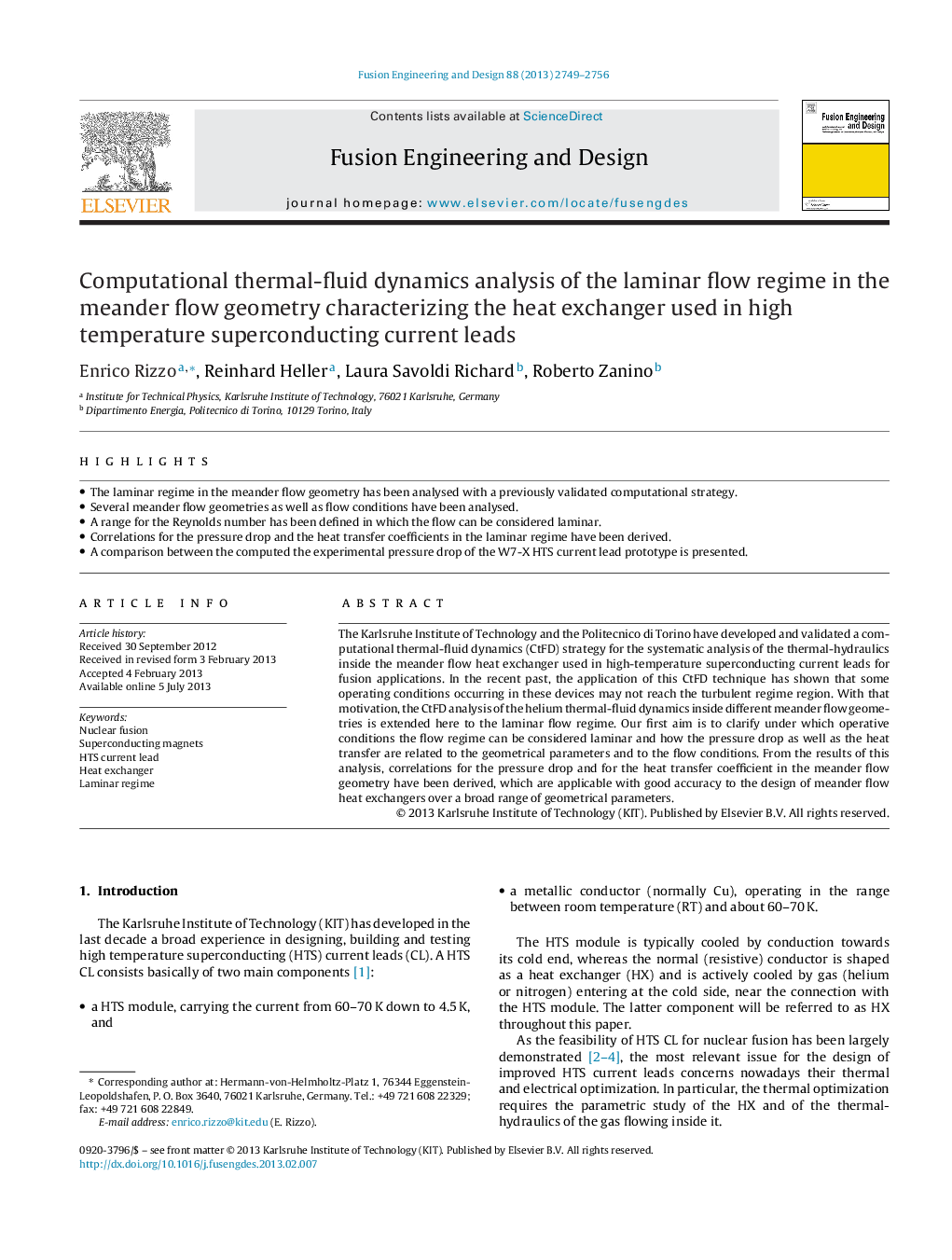| Article ID | Journal | Published Year | Pages | File Type |
|---|---|---|---|---|
| 271360 | Fusion Engineering and Design | 2013 | 8 Pages |
•The laminar regime in the meander flow geometry has been analysed with a previously validated computational strategy.•Several meander flow geometries as well as flow conditions have been analysed.•A range for the Reynolds number has been defined in which the flow can be considered laminar.•Correlations for the pressure drop and the heat transfer coefficients in the laminar regime have been derived.•A comparison between the computed the experimental pressure drop of the W7-X HTS current lead prototype is presented.
The Karlsruhe Institute of Technology and the Politecnico di Torino have developed and validated a computational thermal-fluid dynamics (CtFD) strategy for the systematic analysis of the thermal-hydraulics inside the meander flow heat exchanger used in high-temperature superconducting current leads for fusion applications. In the recent past, the application of this CtFD technique has shown that some operating conditions occurring in these devices may not reach the turbulent regime region. With that motivation, the CtFD analysis of the helium thermal-fluid dynamics inside different meander flow geometries is extended here to the laminar flow regime. Our first aim is to clarify under which operative conditions the flow regime can be considered laminar and how the pressure drop as well as the heat transfer are related to the geometrical parameters and to the flow conditions. From the results of this analysis, correlations for the pressure drop and for the heat transfer coefficient in the meander flow geometry have been derived, which are applicable with good accuracy to the design of meander flow heat exchangers over a broad range of geometrical parameters.
